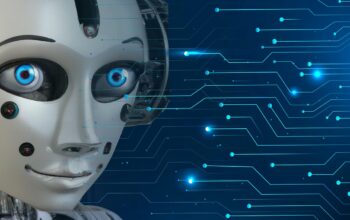
Introduction
toward enhancing the reasoning capabilities of artificial intelligence. The journey to improve AI reasoning is pivotal as it opens doors to more reliable applications in fields like education, healthcare, and scientific research.
Smarter Reasoning in Smaller Models
Despite the promise of large language models, smaller models often struggle with complex reasoning tasks due to their limited capacity. This limitation is primarily because current models rely heavily on rapid pattern recognition rather than deep, analytical thinking. To overcome this, researchers are developing methods that enhance reasoning in smaller models through structured approaches. One notable advancement is the rStar-Math method, which utilizes Monte Carlo Tree Search (MCTS) to facilitate more methodical reasoning. This process includes breaking down complex mathematical problems into manageable steps, training models to predict rewards for each step, and refining strategies through iterative cycles. In tests involving models with parameter counts between 1.5 billion and 7 billion, rStar-Math achieved an impressive average accuracy of 53% on the American Invitational Mathematics Examination (AIME), placing it in the top 20% of high school competitors in the U. S. This demonstrates that even smaller models can achieve significant reasoning capabilities when appropriately designed.
Building Reliable Mathematical Reasoning
Mathematics presents a unique challenge for AI language models, as they often falter in precision and rigor. To address this, researchers are focusing on developing formal methods that enable AI to use structured mathematical tools. For instance, the LIPS (LLM-based Inequality Prover with Symbolic Reasoning) system combines the strengths of language models with symbolic reasoning to tackle Olympiad-level problems effectively. In tests, LIPS achieved state-of – the-art results on 161 problems without requiring additional training data. The challenge lies in accurately translating natural language math problems into machine-readable formats. To bridge this gap, a new framework uses symbolic equivalence and semantic consistency to evaluate outputs, improving accuracy by up to 1.35 times over baseline methods on datasets like MATH and miniF2F. This progress underscores the importance of formalizing mathematical reasoning in AI to enhance reliability.

Boosting Generalization Across Domains
A hallmark of advanced AI is its ability to generalize reasoning skills across various domains. Research has shown that training language models on mathematical data can lead to unexpected improvements in areas like coding and scientific reasoning. The Chain-of – Reasoning (CoR) approach exemplifies this by unifying reasoning across natural language, code, and symbolic forms. CoR allows models to adapt their reasoning strategies based on the nature of the problem, whether it requires natural language for context or code for precise computation. In tests across five different math datasets, CoR demonstrated strong capabilities in addressing both computational and proof-based problems, highlighting its versatility. Moreover, the Critical Plan Step Learning (CPL) approach focuses on high-level planning, encouraging models to break down problems and identify key knowledge. This method combines plan-based MCTS with step-APO, enhancing the AI’s reasoning and generalization abilities. The CPL framework enables models to learn from complex problem-solving strategies, moving closer to human-like reasoning.

Looking Ahead: Next Steps in AI Reasoning
As researchers continue to refine AI’s reasoning capabilities, the focus remains on developing systems that can reliably perform complex tasks across various fields. While advancements in mathematical reasoning and generalization show promise, challenges such as hallucinations and imprecise logic still pose risks in critical applications like healthcare and scientific research. Addressing these issues is essential for building trustworthy AI systems. The exploration of additional tools and frameworks, such as AutoVerus for automated proof generation in Rust code and Alchemy for improving theorem proving, signifies a broader shift toward enhancing the reasoning capabilities of AI. These technologies represent significant progress in creating high-performing reasoning models that can be applied across multiple domains, ultimately leading to a more reliable and versatile AI landscape. In summary, the journey to improve AI reasoning is both complex and promising. By focusing on smarter reasoning in smaller models, building reliable mathematical reasoning, and boosting generalization across domains, researchers are laying the groundwork for more capable and trustworthy AI systems. The future of AI reasoning looks bright, with the potential to transform critical fields and enhance our understanding of complex problems.




